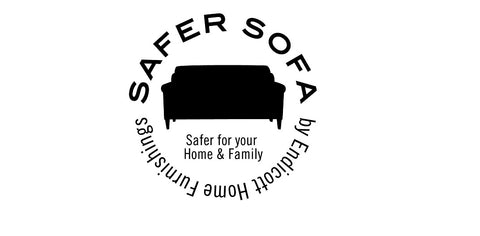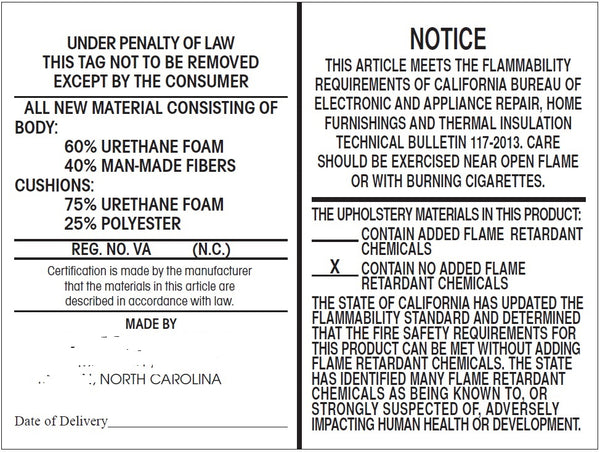 No added formaldehyde.
No added formaldehyde.
No carcinogenic, chemical flame retardants. (Maine's legislature on August 2, 2017 passed the first comprehensive ban on chemical flame retardants sold in new furniture in the entire nation!)
We were first to voluntarily remove harmful chemical flame retardants from our designs, starting in 2008, because it was the right thing to do.

Endicott family accepting PreventHarm.org's Award for Business Leadership at the 2015 Celebration for Healthy Families in Portland, Maine
Our affordably non-toxic (not certified organic) construction, and our flexible designs differentiate us from more expensive certified organic furniture, and from the more rigid designs that drive other furniture stores' order fulfillment models.
Smaller spaces are harder to furnish than more spacious homes where you might have a room for each activity. Often, smaller spaces require consolidating several activities into one area, with functional areas within sight of other living quarters.
Energy efficiency in colder weather and staying cool in warmer times usually starts with building an airtight environment. With increased awareness about common indoor air quality issues, many are building efficient, airtight homes using materials with fewer VOC's. In such a closed environment, there is no place for unwanted, toxic chemicals.
Our smaller, sometimes customizable designs solve many practical needs of smaller spaces, but we have consciously avoided a growing trend over recent years of substituting chemical-filled materials for solid wood, or chemical flame retardants in foam - additives that definitely increase health risks due to the unknown impacts of exposure to known carcinogens that bring no proven benefit (safety or otherwise) to the end consumer. Perhaps certain manufacturers think consumers won’t care to know what goes into their furniture, but our shoppers do care, and want us to be able to disclose what we know about furniture construction and sustainability.
We steer clear of all furniture made with added urea formaldehyde and/or chemical flame retardants, and that means no particle board in structural frame parts, no plywood that is not made with a soy-based, non-toxic glue, and no foam cushions filled with chemicals (mostly formaldehyde and flame retardants) that can cause known health issues. Formaldehyde occurs naturally in us, in plants, and most things around us. That is not the same as the many synthetic forms of formaldehyde that are used to enhance adhesion, texture, or color in finishes.
When shopping for any upholstered furniture containing foam padding or cushions, make sure to look for the "law label" below, clearly stating the furniture is made WITHOUT chemical flame retardants:

None of our chairs and sofas contain chemical flame retardants, and all of the designs we offer are made here in the USA. With the exception of one line of solid wood furniture that is imported, all our wood furniture is made in the USA. The imported small occasional tables are made very well, with solid wood only (we avoid products made with particle board, covered with veneer), and are supplied by a long-established NC family we know will stand behind us and their products if service should ever be needed.
Feel free to contact us with any questions regarding the way our furniture is constructed. If we don’t know something, we will find out for you.
If we wouldn’t want it in our own home, we won’t sell it in our store or on our website.
Thank you!


